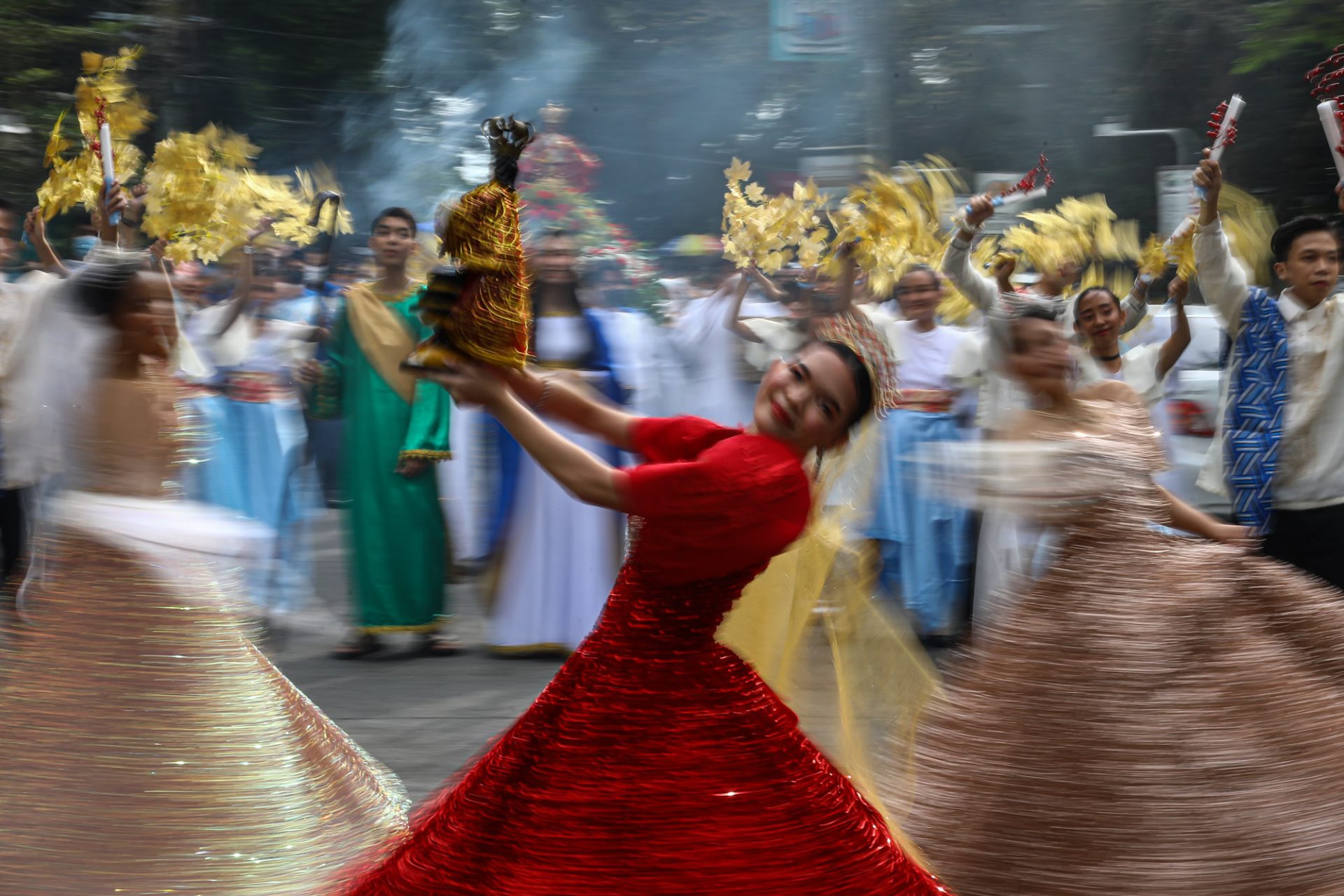Before Sinulog was transformed into a touristic event in the 1980s, as it is in Cebu today, in childhood, I have been dancing together with my Lola in the church and chapels during the feast of Santo Niño.
I once asked her why do we have to dance in front of the child Jesus. Her answer was simple: “Malipay baya ang bata kon imong sayawan; mao pod na kang Jesus.” (To make a child happy, you have to dance; it is the same with the child Jesus).
That was simple enough for my young mind to understand. When a child cries, the mother has to take him and dances him around. When a child is happy, she dances on her own or at the prodding of her parents.
Our God is a happy God. Our God is a child God, a dancing God.
Dance is so much a part of our cultures. To celebrate, we need to sing, sway and dance. So with worship. We can only worship God with our bodies.
Name any community celebration in the Philippines — singing and dancing is always significant part: Karakol in Luzon, Ati-atihan in Panay, Kaamulan in Bukidnon, Pintaflores in Negros, Pantomina in Bikol. It is thus automatic for us to dance when we want to celebrate.
What you see in the touristic Sinulog is a show, a performance in front of an audience. In fact, it is a contest which winds up with a Mardi-Gras like celebration at the end of the day.
What is not shown, however, what is missing in the touristic event is the “Sinulog as prayer,” which is danced in churches by ordinary people, by all people, young and old alike. After the Saturday procession at the Basilica, people stay for sometime, and dance to the song Sinulog song. I have joined these prayer-dance many times in my life.
One is just immersed among dancing bodies, praying bodies. People shout: “Pit senyor, kang Mama kini. Pit senyor, kang Papa kini (Call on God, this for Mom. Call on God, this is for Dad).” As I danced, I can sense people crying as they shout their supplication. Dancing couples hold each other’s hand in prayer. Young people hold their statues and dances with them. You can only imagine what their prayers are deep in their hearts. I can feel with them.
By the gate, old women sell their candles. Before lighting them for you, they ask you for your intentions, and pray-dance those desires in front of the Santo Niño. This does not just happen on the feast day. They are there every day during the significant occasions of your life. They wait for you when you want to light a candle and say a prayer. They will dance it for you. Their prayer-dance is also called “Sinulog.”
What you see in the Basilica is replicated in small chapels and churches in Cebu and elsewhere. I can still remember in my childhood when everyone dances to the distinctive drum beats (before the Sinulog song was composed and sound systems were not yet in place). It still continues until today. Either before the Mass or after the Mass, when the drums start, people start to dance and pray.
Some people want to prohibit the body and its movements within worship. Dancing should be prohibited in the churches, they say. But did not King David dance “with all his might while wearing a priestly garment” in front of the ark of Covenant? (2 Sam 6: 14-22).
For the “liturgical police” among us, let me quote a document on Catholic liturgy:
“Among some peoples, singing is instinctively accompanied by hand-clapping, rhythmic swaying and dance movements on the part of the participants. Such forms of external expression can have a place in the liturgical actions of these peoples on condition that they are always the expression of true communal prayer of adoration, praise, offering and supplication, and not simply a performance.” (Instruction: Inculturation of the Roman Liturgy, No. 42).
Our God is a happy God, a God of joy. Our God is a child God. Our God is a dancing God.
I think some Christians have become too much of an “adult” that they could no longer smile and cry, wave and sway, dance and pray at the same time.
Pit Senyor, sa mga “tigulang” kini! (Pit Senyor, this is for the elderly!)
Father Daniel Franklin Pilario, C.M., is a theologian, professor, and pastor of an urban poor community in the outskirts of the Philippine capital. He is also Vincentian Chair for Social Justice at St. John’s University in New York. The opinions and views expressed in this article are those of the authors. They do not purport to reflect the opinions or views of LiCAS News or its publishers.







